- Proper Storage for Fresh Apples: Ensuring Longevity
- 1. Choose the Right Apples:
- 2. Clean and Dry:
- 3. Separate and Sort:
- 4. Temperature and Humidity:
- 5. Storage Containers:
- 6. Check and Rotate:
- 7. Freezing Option:
- Choosing the Right Variety of Apples
- Selecting Apples with Maximum Ripeness
- Preparing Apples for Storage
- 1. Selecting the Right Apples
- 2. Sorting and Cleaning
- 3. Prepping for Storage
- 4. Choosing the Right Storage Location
- 5. Regularly Inspecting Apples
- 6. Rotating Apples
- Selecting the Ideal Storage Location
- Cool Temperature
- Humidity Control
- Good Air Circulation
- Away from Other Fruits and Vegetables
- Dark Environment
- Avoiding Extreme Temperatures
- Utilizing the Best Storage Containers
- 1. Plastic Bags
- 2. Cardboard Boxes
- 3. Wooden Crates
- 4. Mesh Bags
- 5. Apple Racks
- Ensuring Proper Temperature and Humidity
- Temperature
- Humidity
- Regularly Inspecting Apples for Spoilage
- 1. Visual Inspection
- 2. Touch Test
- 3. Sniff Test
- 4. Check the Stem
- 5. Rotate the Apples
- Taking Actions to Preserve Freshness until Spring
- 1. Sort and Inspect Apples
- 2. Choose the Right Storage Location
- 3. Use Proper Storage Containers
- 4. Keep Apples Separated
- 5. Monitor and Rotate Apples
- 6. Consider Storage Alternatives
- Question-answer:
- How long can apples be stored for?
- What is the best temperature for storing apples?
- Can I store apples in the refrigerator?
- Should I wash apples before storing them?
- What should I do if I notice a rotten apple in the storage?
- Can I freeze apples for long-term storage?
- Video: How to Keep Your Apples from Turning Brown with Chef Rebecca
Apples are a popular fruit that can be enjoyed in a variety of ways, whether on their own, juiced, or used in cooking. However, if not stored properly, apples can quickly lose their freshness and become soft or mealy. Proper storage is especially important if you have a large quantity of apples and want to enjoy them for an extended period of time, such as until spring.
One key factor in keeping apples fresh is temperature. Apples should be stored in a cool place, ideally between 30 and 40 degrees Fahrenheit (or 0 and 4 degrees Celsius). This helps to slow down the ripening process and prevent the apples from becoming overripe too quickly. A cold cellar or refrigerator is an ideal storage location for apples.
Another important factor to consider is humidity. Apples need a moderate level of humidity to stay fresh. If the air is too dry, the apples can shrivel up, while if the air is too damp, the apples can rot. Aim for a humidity level of around 90% to keep the apples in optimal condition. If you are storing apples in a refrigerator, you can place a damp paper towel in the storage container to help maintain the right level of humidity.
In addition to temperature and humidity, it is also important to handle apples gently to prevent bruising. Even a small bruise can accelerate the ripening process and cause the apple to spoil faster. When storing apples, make sure to inspect them for any bruised or damaged areas and separate them from the rest of the apples to prevent the bruising from spreading.
Proper storage and handling are essential for keeping apples fresh until spring. By storing apples in a cool place with the right level of humidity and handling them with care, you can enjoy the crisp and juicy taste of apples even months after they are harvested.
Proper Storage for Fresh Apples: Ensuring Longevity
Apples are a delicious fruit that can be enjoyed throughout the year, but proper storage is crucial for ensuring their longevity. With the right techniques, you can keep your apples fresh and flavorful until spring. Here are some tips on how to store apples properly:
1. Choose the Right Apples:
When selecting apples for storage, choose those that are firm, without any bruises or blemishes. Different apple varieties have different storage characteristics, so opt for those known for their long shelf life, such as Granny Smith, Fuji, or Honeycrisp.
2. Clean and Dry:
Before storing, gently wash the apples in cold water to remove any dirt or residue. Ensure that the apples are completely dry before storing as excess moisture can lead to spoilage. Pat them dry with a clean towel or let them air dry for a few minutes.
3. Separate and Sort:
It is important to separate apples that are bruised or starting to spoil from the healthy ones. A single rotten apple can spoil the entire batch, so check your apples regularly and remove any that are no longer in good condition. Sorting them by size can also help with rotation and usage.
4. Temperature and Humidity:
Apples are best stored in a cool and moderately humid environment. The ideal temperature for apple storage is around 32 to 40 degrees Fahrenheit (0 to 4 degrees Celsius). A basement, cellar, or refrigerator crisper drawer are suitable options. Avoid storing apples near strong-smelling foods as they can absorb odors.
5. Storage Containers:
Use ventilated containers or apple-specific storage bags to store your apples. These bags allow for air circulation, preventing moisture buildup and maintaining freshness. Avoid using plastic bags without ventilation as they can trap moisture and increase the risk of spoilage.
6. Check and Rotate:
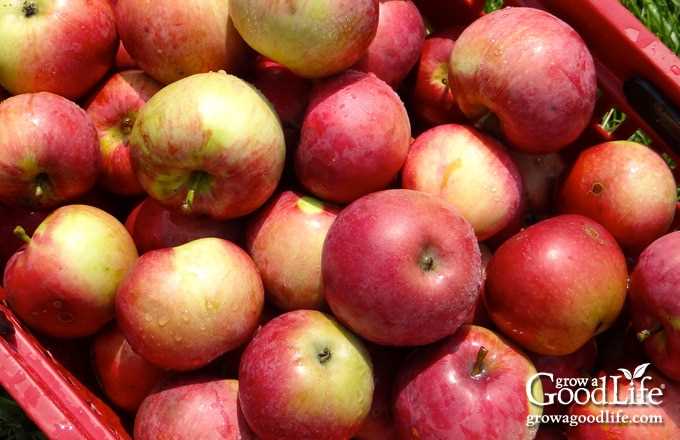
Regularly check your stored apples for any signs of spoilage, such as soft spots or mold. Remove any damaged apples promptly to prevent the spread of spoilage. When removing apples for consumption, be sure to rotate the remaining ones to ensure even usage.
7. Freezing Option:
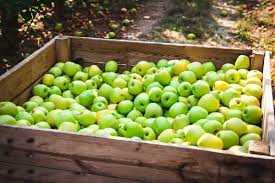
If you have an excess supply of apples, consider freezing them for later use. Peel, core, and slice the apples before placing them in airtight freezer bags. Label the bags with the current date to keep track of their freshness. Frozen apples can be used in pies, sauces, or smoothies.
By following these proper storage techniques, you can extend the lifespan of your fresh apples and enjoy their flavor and nutritional benefits until spring arrives.
Choosing the Right Variety of Apples
When it comes to storing apples for the long term, choosing the right variety is crucial. Not every apple variety is suitable for prolonged storage, so it’s important to select the right ones that will stay fresh until spring.
Here are a few apple varieties that are known for their excellent storage qualities:
Granny Smith: This green apple variety is known for its tart flavor and excellent storage capabilities. Granny Smith apples can stay fresh for up to 5 months when stored properly.
Honeycrisp: Honeycrisp apples are known for their sweet, juicy, and crisp texture. They have a good storage life and can remain fresh for up to 4 months.
Jonathan: Jonathan apples are firm and tangy with a slightly sweet flavor. They are great for long-term storage and can last for up to 6 months.
It’s important to note that not all apple varieties are suitable for long-term storage. Some varieties, such as Red Delicious or Golden Delicious, are best consumed fresh or used within a few weeks of harvest.
When selecting apples for long-term storage, make sure to choose ones that are free from bruising, cuts, or any other signs of damage. It’s also important to store apples with similar ripeness levels together to prevent ethylene gas, produced by ripe apples, from causing premature ripening in other apples.
If you’re unsure about which apple varieties are suitable for storage, check with your local orchard or apple supplier. They can provide you with recommendations based on your specific needs and preferences.
Selecting Apples with Maximum Ripeness
When selecting apples, it’s important to choose ones that are ripe and in good condition. Here are some tips to help you select apples with maximum ripeness:
- Color: Look for apples with a vibrant, uniform color. Avoid apples with dull or greenish tones, as they may not be fully ripe.
- Firmness: Pick up the apple and gently press it. It should feel firm, without any soft spots or bruises.
- Size: The size of the apple does not necessarily indicate its ripeness. Choose apples that feel heavy for their size, as this can indicate juiciness.
- Aroma: Smell the apple near the stem. Ripe apples will have a fragrant, sweet aroma.
- Stem: Check the stem of the apple. A fresh apple should have a green, intact stem.
- Skin: Examine the skin of the apple. It should be smooth, without any wrinkles or blemishes.
- Variety: Different apple varieties have different ripening times. Research the specific variety you’re interested in and pick apples that are known to be ripe during the desired time frame.
By following these tips, you can select apples that are at their peak ripeness and ensure the best flavor and freshness for your stored apples.
Preparing Apples for Storage
Properly preparing apples for storage is essential to keeping them fresh and flavorful until spring. Follow these steps to ensure your apples stay in top condition:
1. Selecting the Right Apples
Choose Apples: Select apples that are firm, unblemished, and without any signs of bruising. Different apple varieties have different storage lengths, so consider the storage life of each type before making your selection.
2. Sorting and Cleaning
Sort Apples: Sort your apples, separating out any that are damaged or bruised. Remove any stems or leaves that may still be attached.
Clean Apples: Rinse your apples with cool water to remove any dirt or debris. Pat them dry with a clean towel.
3. Prepping for Storage
Wrap Individually: Wrap each apple individually in tissue paper, newspaper, or wax paper. This helps prevent the spread of any potential rot or decay.
Layer in Crates or Boxes: Place the wrapped apples in crates or boxes, leaving enough space between each apple for air circulation.
4. Choosing the Right Storage Location
Cool and Dark: Store your apples in a cool, dark place, like a root cellar or basement. The ideal temperature for apple storage is around 32-40°F (0-4°C).
Avoid Humidity: Make sure the storage location is dry and has low humidity. Excess moisture can cause apples to rot.
5. Regularly Inspecting Apples
Check for Spoilage: Regularly inspect your stored apples for any signs of spoilage, such as mold, shriveling, or softness. Remove any spoiled apples immediately to prevent them from affecting the others.
6. Rotating Apples
Rotate Apples: Periodically rotate your stored apples to ensure even air circulation and prevent any apples from being squished or damaged.
By following these steps, you can properly prepare your apples for storage and enjoy their crispness and flavor well into the spring season.
Selecting the Ideal Storage Location
Properly storing apples is crucial to extending their shelf life and ensuring their freshness until spring. The ideal storage location for apples should have the following characteristics:
Cool Temperature
Apples thrive in cool temperatures, ideally between 30°F (-1°C) to 40°F (4°C). It is important to avoid storing them in areas that are too warm, as this can cause them to ripen and spoil faster.
Humidity Control
The storage location should have moderate humidity, around 90% to 95%. This helps prevent the apples from drying out or becoming too moist, both of which can contribute to spoilage.
Good Air Circulation
Adequate air circulation is essential to maintaining the freshness of apples. Make sure the storage area is well-ventilated to prevent the buildup of ethylene gas, which can accelerate the ripening process.
Away from Other Fruits and Vegetables
Apples emit high levels of ethylene gas, which can cause other fruits and vegetables to ripen and spoil quickly. Store apples separately from other produce to avoid cross-contamination and extend their shelf life.
Dark Environment
Exposure to light can cause apples to become discolored and lose their crispness. Store them in a dark environment, such as a cellar or pantry, to protect their quality.
Avoiding Extreme Temperatures
Extreme temperatures, both hot and cold, can negatively impact the quality of apples. Avoid storing them in areas directly exposed to sunlight or near sources of heat, such as heaters or ovens.
By selecting the ideal storage location with cool temperatures, humidity control, good air circulation, darkness, and separation from other produce, you can greatly extend the freshness of your apples and enjoy them until spring.
Utilizing the Best Storage Containers
When it comes to storing apples properly and ensuring their freshness until spring, choosing the right storage containers is crucial. The right containers can help maintain the optimal conditions for the apples, keeping them fresh and crisp for an extended period of time.
1. Plastic Bags
Using plastic bags is a simple and effective way to store apples. Make sure to use bags that are clean and have no holes or tears. Place a few apples in each bag, making sure not to overcrowd them. Seal the bags tightly, removing as much air as possible. Store the bags in a cool and dark place, such as a cellar or refrigerator, to prevent the apples from ripening too quickly. Plastic bags can help retain the moisture and prevent the apples from drying out.
2. Cardboard Boxes
Cardboard boxes are another excellent option for storing apples. Choose sturdy boxes that are clean and dry. Line the boxes with newspaper or parchment paper to absorb any excess moisture. Place the apples in the boxes, ensuring they are not touching each other. Apples should be stored in a single layer to prevent bruising. Store the boxes in a cool and well-ventilated area. This method allows for air circulation, which helps prevent the apples from spoiling.
3. Wooden Crates
Wooden crates are a traditional choice for apple storage. They provide good air circulation and can help regulate humidity levels. Ensure the crates are clean and dry before placing the apples inside. Line the crates with straw or shredded newspaper to prevent bruising. Place the apples in a single layer, making sure they do not touch. Store the crates in a cool and dark location, such as a garage or basement. Regularly check the apples for any signs of spoilage.
4. Mesh Bags
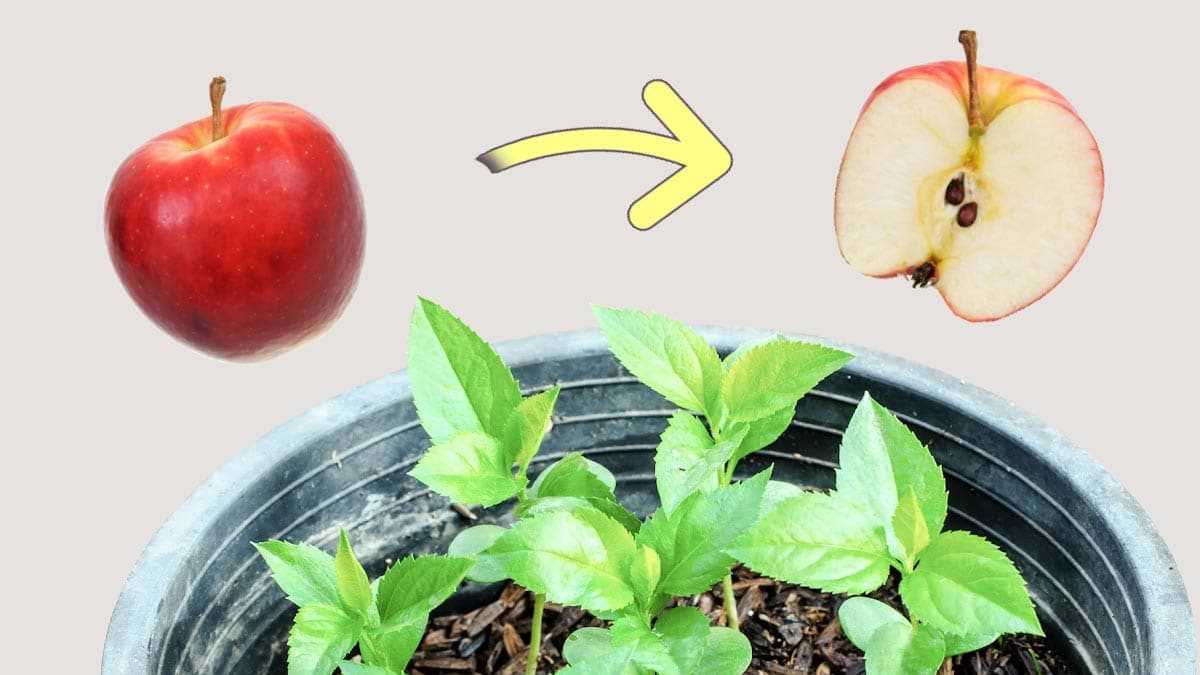
Mesh bags offer good air circulation, allowing the apples to breathe and preventing them from spoiling. Choose bags that are clean and have small gaps between the mesh. Place a few apples in each bag, making sure not to overcrowd them. Hang the bags in a cool and well-ventilated area, such as a pantry or cellar. Check the bags regularly and remove any apples that show signs of spoilage to prevent the rest from being affected.
5. Apple Racks
Apple racks are specifically designed for storing apples and can be a convenient option. These racks typically have individual compartments to keep each apple separate and prevent them from touching. They also provide good airflow, which helps maintain the freshness of the apples. Place the apples on the rack and ensure they are not stacked on top of each other. Store the rack in a cool and dry area, away from direct sunlight.
Remember to regularly check the stored apples for any signs of spoilage and remove any affected ones promptly to prevent further spoilage. With the right storage containers and proper care, you can enjoy fresh and delicious apples all the way until spring!
Ensuring Proper Temperature and Humidity
Proper temperature and humidity are essential for keeping apples fresh and preventing them from spoiling. Here are some tips to ensure optimal conditions:
Temperature
- Store apples at a temperature between 30°F (-1°C) and 40°F (4°C). This range will help slow down the ripening process and extend their shelf life.
- Avoid storing apples near other fruits and vegetables that produce ethylene gas, as it can accelerate ripening.
- Do not freeze apples, as it will affect their texture and taste.
Humidity
- Keep the humidity level in your storage area between 90% and 95%. This high humidity will help prevent apples from drying out.
- Avoid storing apples in areas with low humidity, such as near heating vents or in dry basements.
- If the air in your storage area is too dry, you can place a bowl of water or a damp cloth near the apples to increase the humidity.
By maintaining the proper temperature and humidity, you can ensure that your apples stay fresh and tasty until spring.
Regularly Inspecting Apples for Spoilage
When storing apples for an extended period of time, it is important to regularly inspect them for any signs of spoilage. This will help you identify and remove any apples that may have started to rot, preventing the spoilage from spreading to other apples.
1. Visual Inspection
Visually inspect each apple by looking for any visible signs of spoilage. These can include discoloration, bruising, soft spots, or mold. Be sure to check all sides of the apple, as some spoilage may only be visible on one side.
2. Touch Test
Gently press on the apple with your thumb to check for any softness. A firm apple indicates that it is still fresh, while a soft or mushy texture may be a sign of spoilage.
3. Sniff Test
Smell the stem end of each apple to check for any unusual odors. A sweet, fresh aroma is a good indicator of a healthy apple. If you detect any sour or fermented smells, the apple may have started to spoil.
4. Check the Stem
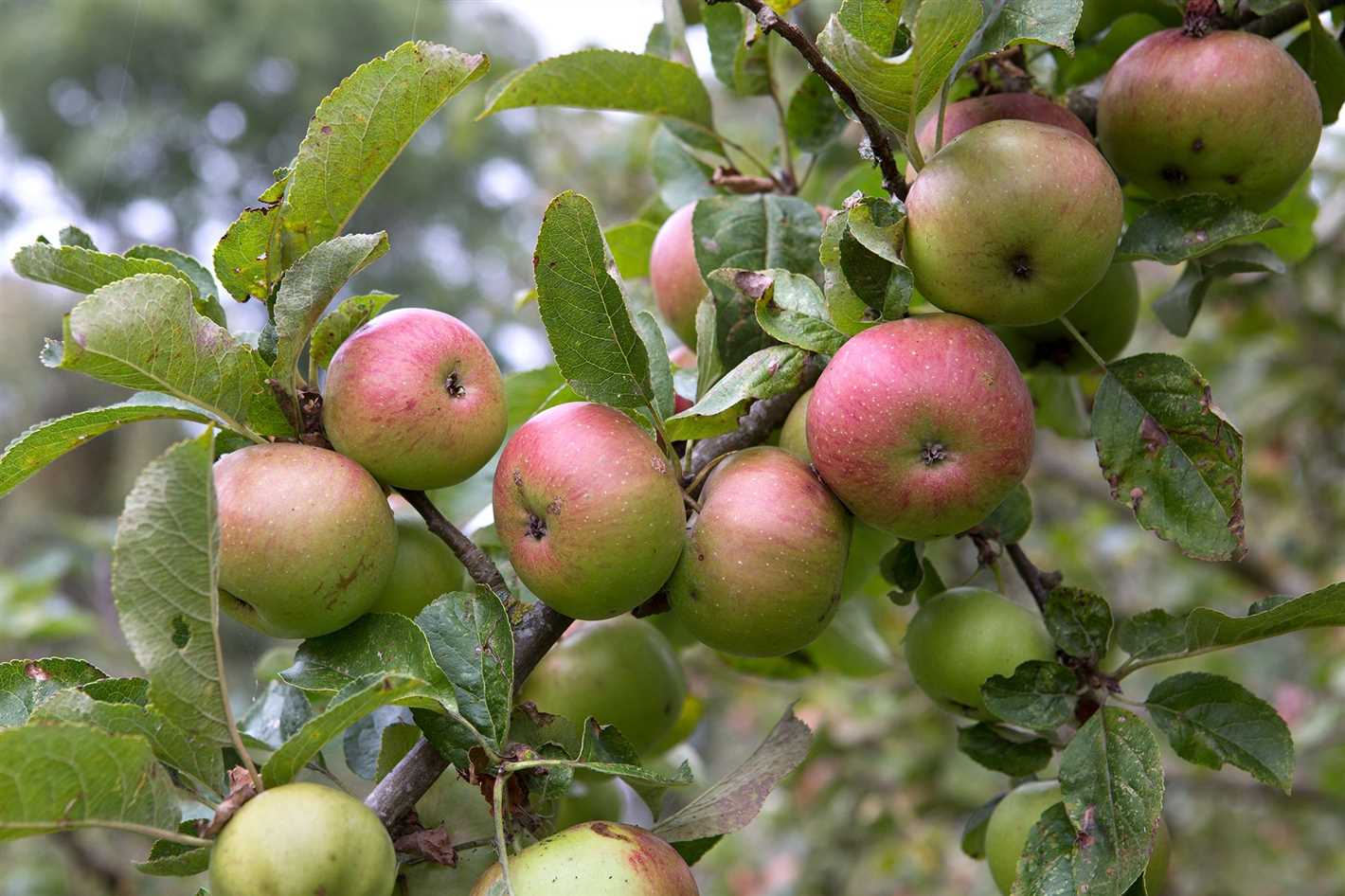
Inspect the stems of the apples to see if they are still attached and intact. A loose or missing stem can be a sign that the apple has been damaged or is beginning to spoil.
5. Rotate the Apples
Regularly rotate the apples to ensure that each one has an opportunity to breathe and prevent the build-up of moisture, which can accelerate spoilage. This will also give you a chance to inspect each apple from different angles.
By regularly inspecting your stored apples, you can identify any potential spoilage early on and remove them before they contaminate the rest of your apples. This will help extend the shelf life of your apples and ensure that you can enjoy fresh, delicious apples until spring.
Taking Actions to Preserve Freshness until Spring
Preserving the freshness of apples and keeping them fresh until spring requires proper storage techniques. By taking a few simple actions, you can ensure that your apples stay crisp and delicious for an extended period of time.
1. Sort and Inspect Apples
Before storing your apples, it’s essential to sort and inspect them. Remove any damaged or bruised apples, as these can spoil quickly and affect the rest of the batch. Look for signs of rot or pests and discard any apples with these issues.
2. Choose the Right Storage Location
Find a cool and dark location for storing your apples, such as a basement or cellar. The ideal temperature range is between 30°F (-1°C) and 40°F (4°C). Avoid areas that are prone to temperature fluctuations, as this can cause the apples to spoil faster.
3. Use Proper Storage Containers
When storing apples, it’s best to use breathable containers such as wooden crates or cardboard boxes. These containers allow for air circulation, preventing the buildup of moisture and reducing the risk of rot. Avoid using airtight containers, as this can trap moisture and promote spoilage.
4. Keep Apples Separated
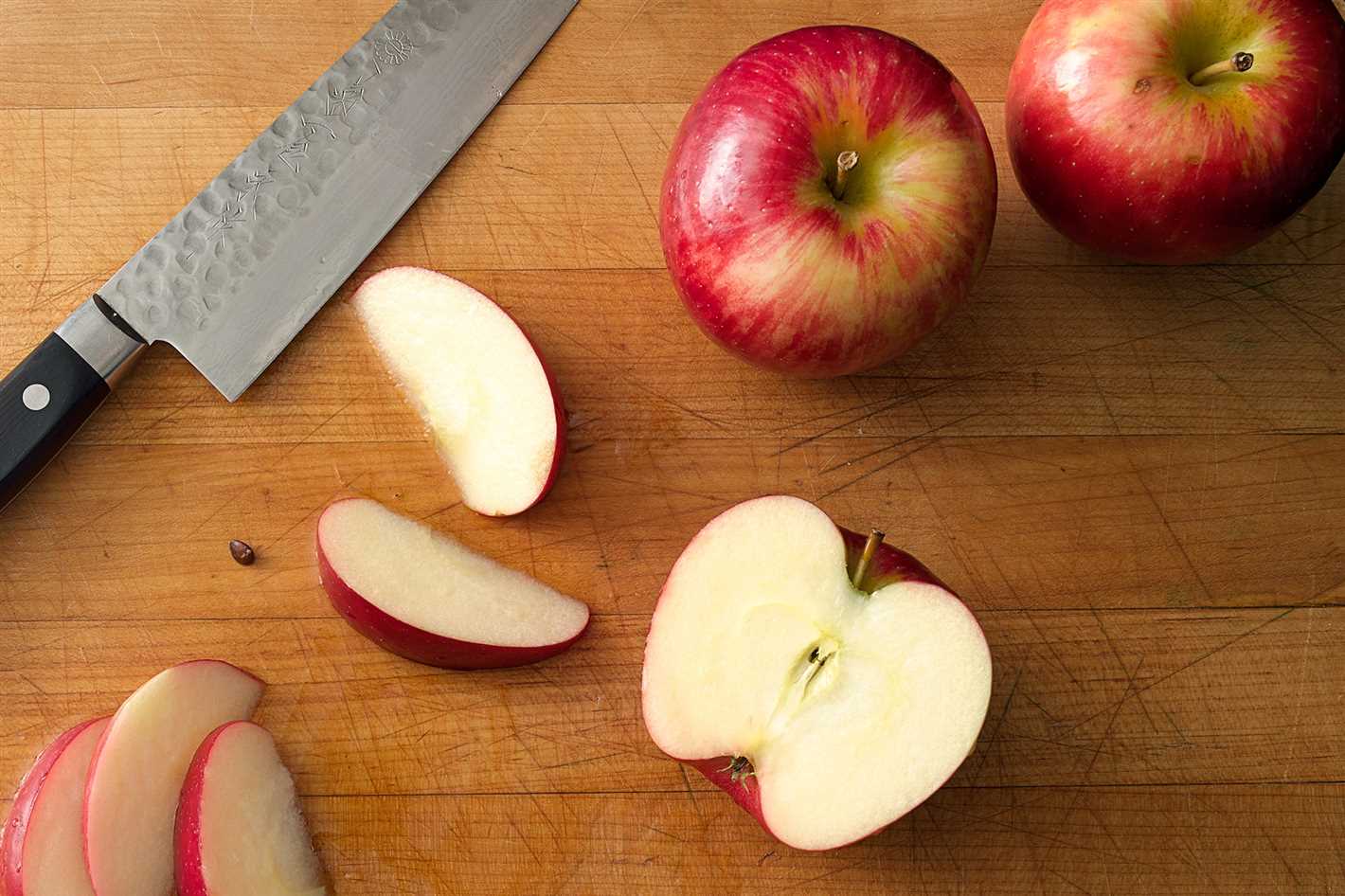
To prevent the spread of rot or spoilage, keep your apples separated during storage. Place a layer of newspaper or parchment paper between the apples to create a barrier. This helps to minimize direct contact between the apples and prevents the spread of any potential issues.
5. Monitor and Rotate Apples
Regularly check on your stored apples to monitor their condition. Remove any apples that show signs of spoilage or rot immediately to prevent it from spreading to other apples. Additionally, rotate the apples occasionally to ensure even air circulation and prevent any pressure points that could lead to spoilage.
6. Consider Storage Alternatives
If you have a large quantity of apples and don’t have access to a suitable storage location, consider alternative preservation methods. Canning, freezing, or dehydrating apples are great options for extending their shelf life and enjoying them even after the winter months.
By following these steps and taking the necessary actions, you can preserve the freshness of your apples and enjoy their delicious flavor well into the spring months.
Question-answer:
How long can apples be stored for?
Apples can be stored for up to several months if stored properly.
What is the best temperature for storing apples?
The ideal temperature for storing apples is between 30 and 35 degrees Fahrenheit.
Can I store apples in the refrigerator?
Yes, you can store apples in the refrigerator to extend their shelf life. However, make sure to keep them away from other fruits and vegetables as they release ethylene gas which can cause the apples to spoil faster.
Should I wash apples before storing them?
No, it is best not to wash apples before storing them as the moisture can promote rotting. It is better to wash them right before consuming.
What should I do if I notice a rotten apple in the storage?
If you notice a rotten apple in the storage, it is important to remove it immediately to prevent the spread of rot to other apples.
Can I freeze apples for long-term storage?
Yes, you can freeze apples for long-term storage. Just make sure to peel, core, and slice them before freezing. It is also recommended to treat the slices with lemon juice to prevent browning.







